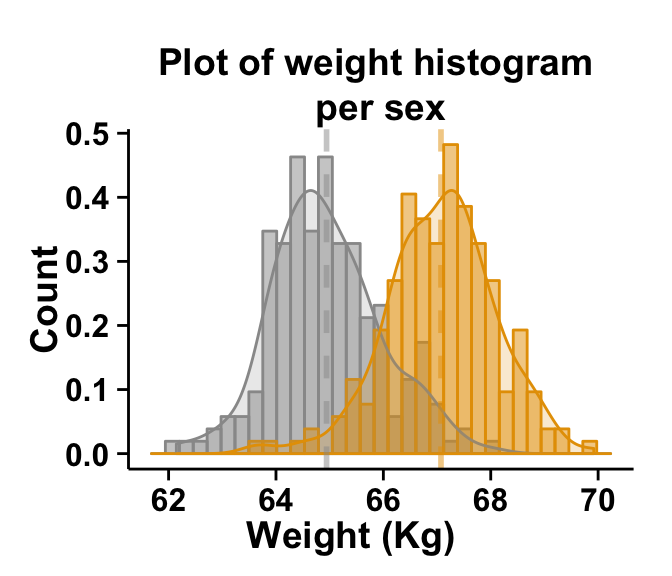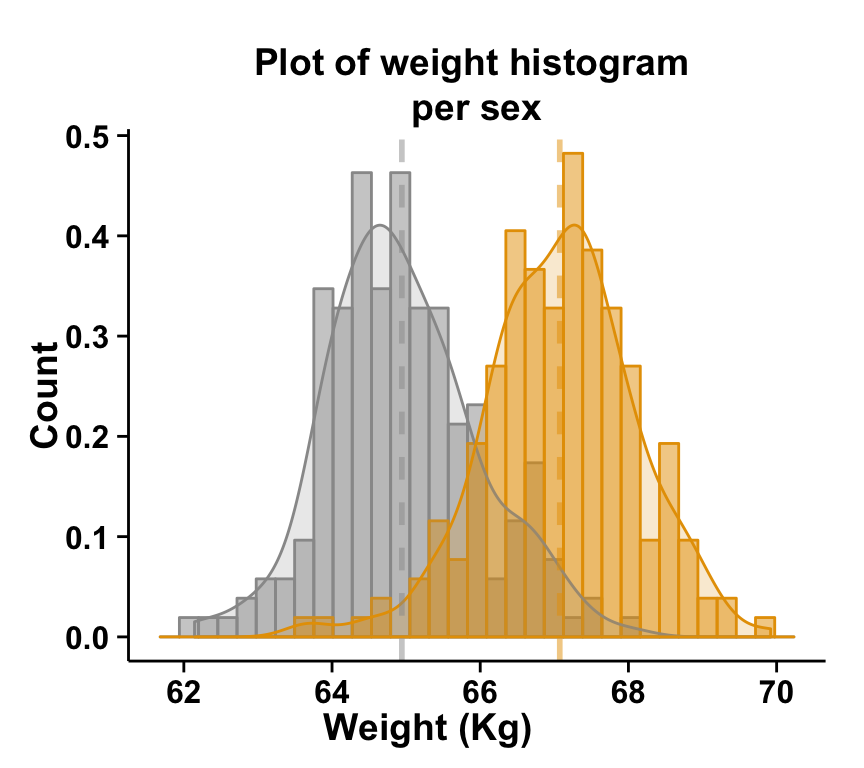

Below we’ve applied theme_economist(), which approximates graphs in the Economist magazine. There are a wider range of pre-built themes available as part of the ggthemes package (more information on these here). ), binwidth = 10, colour = "black", fill = "#56B4E9" ) + scale_x_continuous ( name = "Mean ozone in\nparts per billion", breaks = seq ( 0, 175, 25 ), limits = c ( 0, 175 )) + scale_y_continuous ( name = "Count" ) + ggtitle ( "Frequency histogram of mean ozone" ) + theme ( axis.line = element_line ( size = 1, colour = "black" ), = element_blank (), = element_blank (), panel.border = element_blank (), panel.background = element_blank (), plot.title = element_text ( size = 20, family = "xkcd-Regular" ), text = element_text ( size = 16, family = "xkcd-Regular" ), = element_text ( colour = "black", size = 12 ), = element_text ( colour = "black", size = 12 )) p7 P7 <- ggplot ( airquality, aes ( x = Ozone )) + geom_histogram ( aes ( y =. Note that the normal density curve will not work if you are using the frequency rather than the density, which we are changing in our next step. One further change we must make to display the normal curve correctly is adding aes(y =.
Ggplot histograms how to#
We will discuss how to customise colours further below. Finally, you can change the colour using the colour = "red" argument. If you have missing data like we did, make sure you pass the na.rm = TRUE argument to the mean and sd parameters. In order to overlay the function curve, we add the option stat_function(fun = dnorm), and specify the shape using the mean = mean(airquality$Ozone) and sd = sd(airquality$Ozone) arguments. In this case, we can see it deviates from a normal distribution, showing marked positive skew. We can overlay a normal density function curve on top of our histogram to see how closely (or not) it fits a normal distribution. # Warning: Removed 5 rows containing non-finite values (stat_fitdistr).P7 <- ggplot ( airquality, aes ( x = Ozone )) + geom_histogram () p7 # Warning: Removed 5 rows containing non-finite values (stat_fitdistr). Gf_fitdistr(dist = "normal", color = "blue") # Warning: Removed 5 rows containing non-finite values (stat_density). # learnr::run_tutorial("refining", package = "ggformula") gf_dens( ~ height | gender, data = d) %>% # learnr::run_tutorial("introduction", package = "ggformula")


# col_factor # Loading required package: ggridges # # discard # The following object is masked from 'package:readr': # Attaching package: 'scales' # The following object is masked from 'package:purrr': # geom_errorbarh, GeomErrorbarh # Loading required package: scales # # Attaching package: 'ggstance' # The following objects are masked from 'package:ggplot2': library(ggformula) # Loading required package: ggstance # Not within ggplot2 per se, but if you are willing to use ggformula then it is pretty straight forward ( source). # Warning: Removed 10 rows containing non-finite values (stat_bin). Scale_fill_brewer(type = "qual", palette = "Set1") # Warning: Removed 5 rows containing non-finite values (stat_bin).

Labs(title = "Facetted histograms with overlaid normal curves",Ĭaption = "The grey histograms shows the whole distribution (over) both groups, i.e. Stat_function(data = d_summary %>% filter(gender = "male"), Stat_function(data = d_summary %>% filter(gender = "female"),


 0 kommentar(er)
0 kommentar(er)
